Ever walked into a lobby and thought, “Is this a waiting room or a punishment?”
Yeah. Same.
You’ve got one chance to make a first impression. If your lobby’s boring, outdated, or just…meh, you’re losing people before they even blink. Whether it’s a hotel lobby, office lobby, apartment building, or even a co-working space—your lobby design matters.
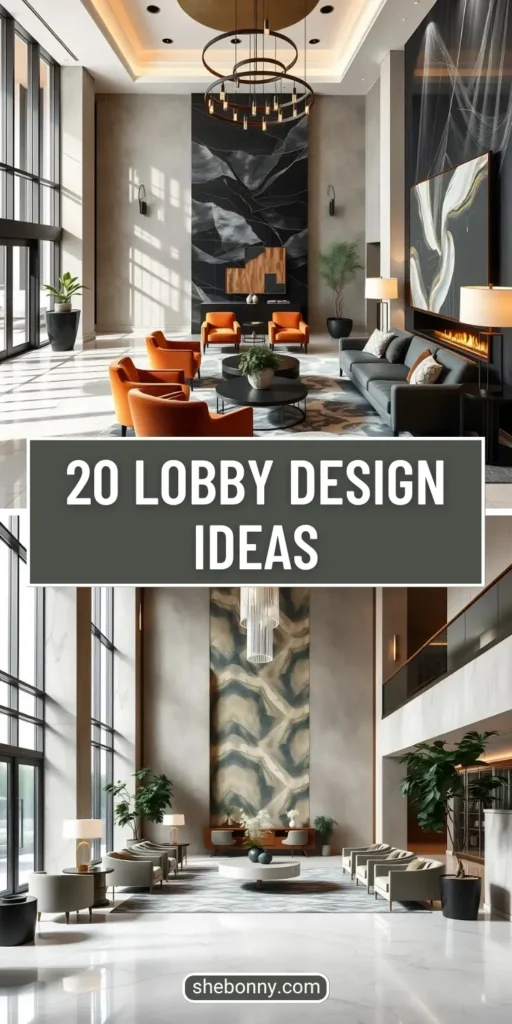
And not just “put some chairs and art up” kind of design.
I’m talking real transformation.
Stuff that feels intentional, welcoming, and makes people want to stay.
1. Statement Furniture That Screams “We Give a Damn”

First impressions are made in 3 seconds. Your lobby furniture is the handshake.
Here’s a real tip:
- Swap the generic boxy couch with a bold designer piece
- Go for organic curves, textured fabrics, or mixed material combos (leather + steel = fire)
- Furniture is an extension of your brand—own it
Even better? Local artisans over big-box store replicas.
2. Lighting That Hits Different
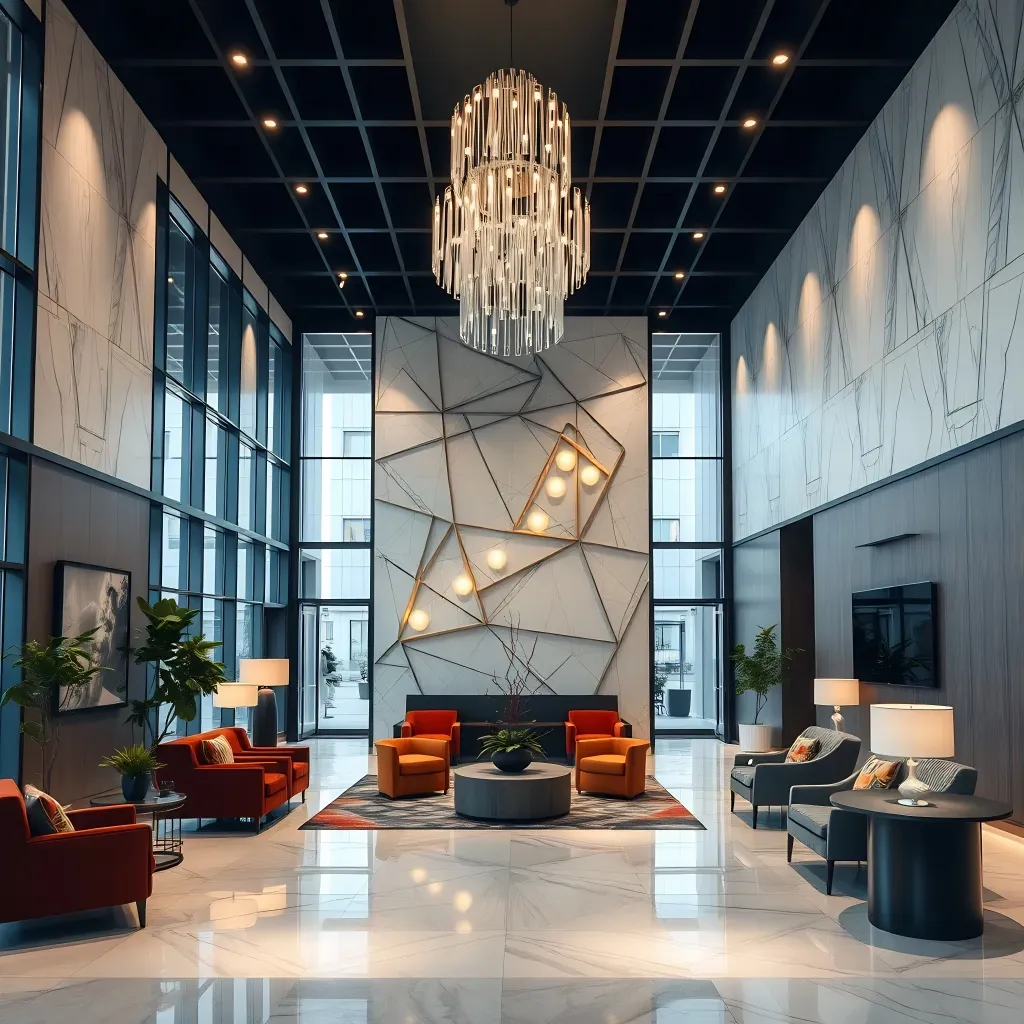
Lighting in your lobby shouldn’t feel like a hospital or a Vegas casino.
Think layered lighting–this means:
- Overhead ambient light (not fluorescents. Never fluorescents)
- Accent lighting for walls, plants, or art
- Task or table lamps near reading areas
Pro tip: Use warm white bulbs (2700K-3000K). Makes people look good. And feel good.
Mood matters.
3. Live Greenery (Not That Ugly Fake Plant in a Corner)
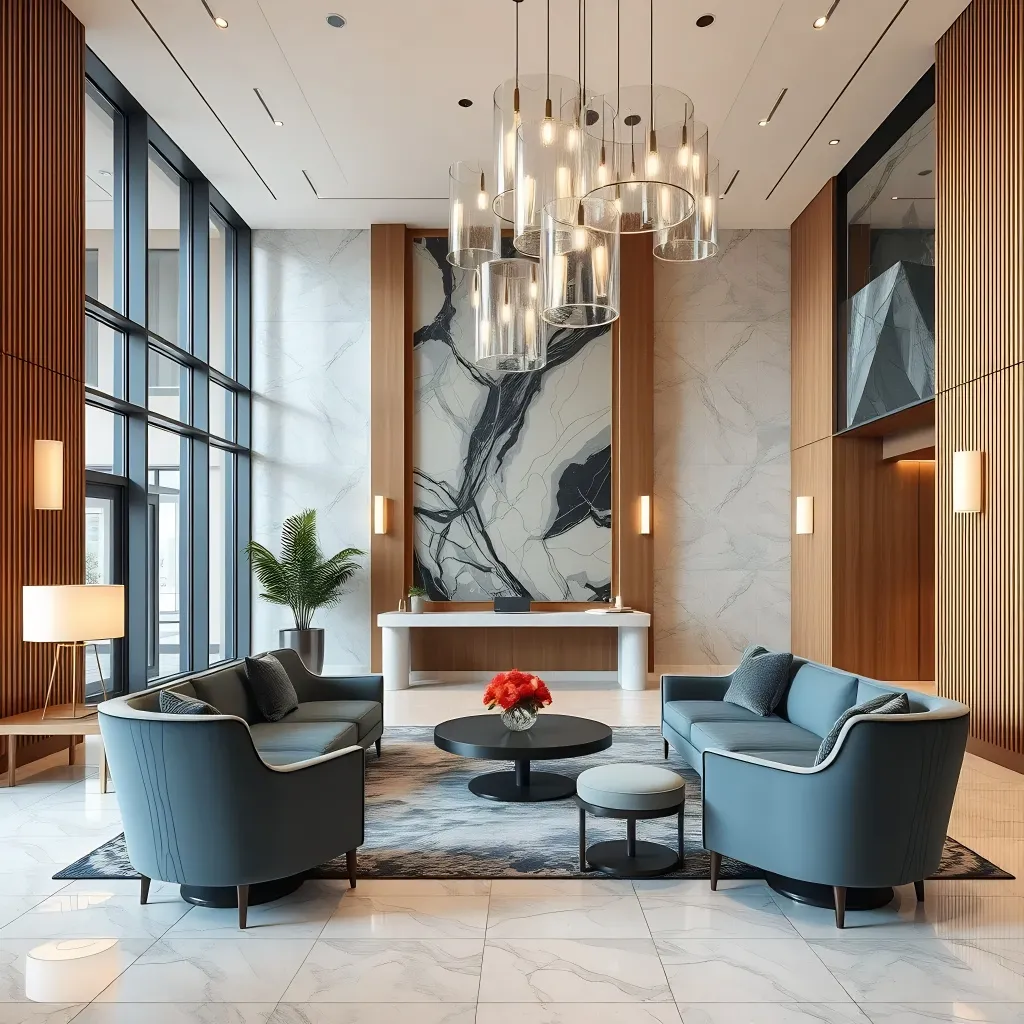
Your lobby needs life. Literally.
We’re biologically wired to love nature. It relaxes us. Increases our trust factor.
Want people to feel calm waiting? Add plants:
- Tall figs, snake plants, or monstera for impact
- Living plant walls to flex a little sustainability clout
- Even low-maintenance succulents in modern pots work
No dust-covered IKEA fake ficus, please.
4. Lobby Art That Actually Connects (Skip the Random Abstracts)
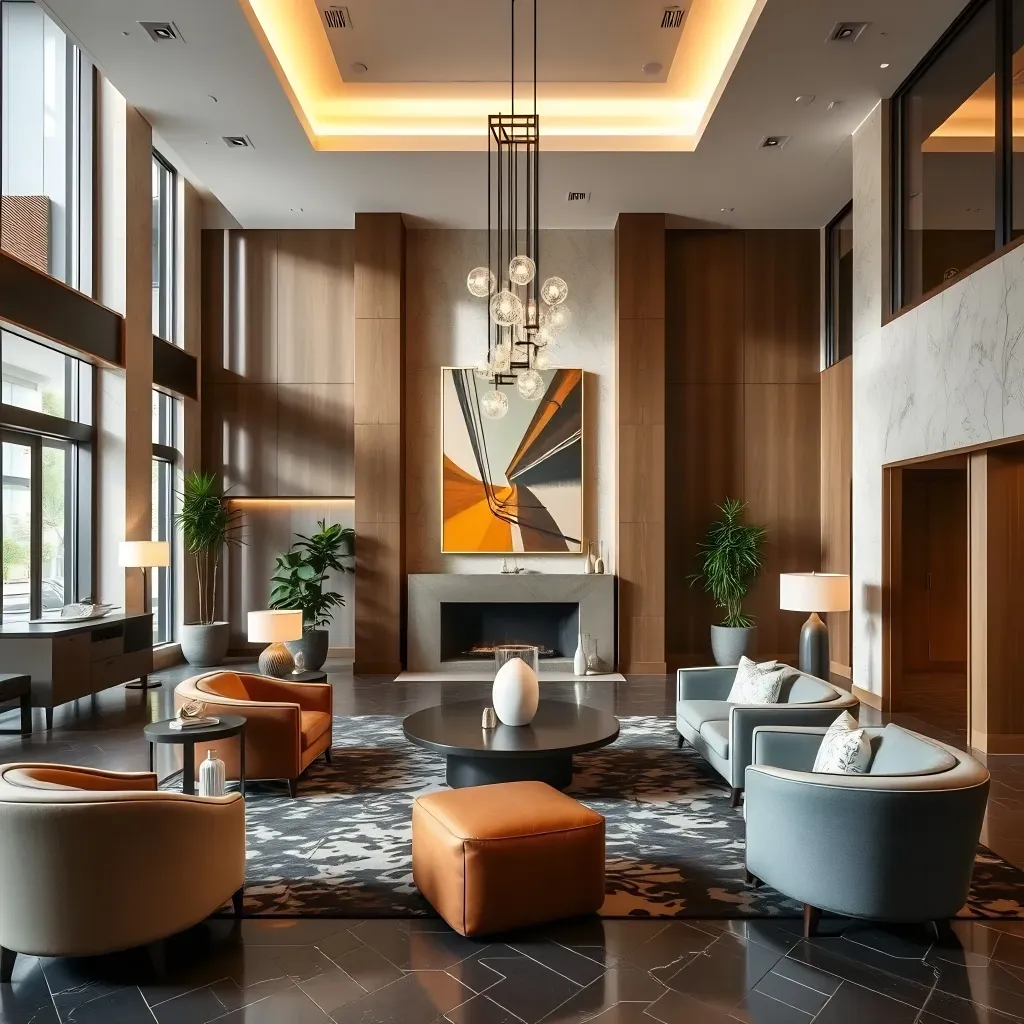
One of the top lobby design ideas people get wrong—is art.
If your artwork looks like it came free with the frame…
Start over.
Use pieces that tell a local story. Think:
- A large canvas by a local painter
- Photography series of the city you’re in
- Sculptures that tie into your brand
Art should start conversations—not be background noise.
5. Flexible Seating Setups for Real People
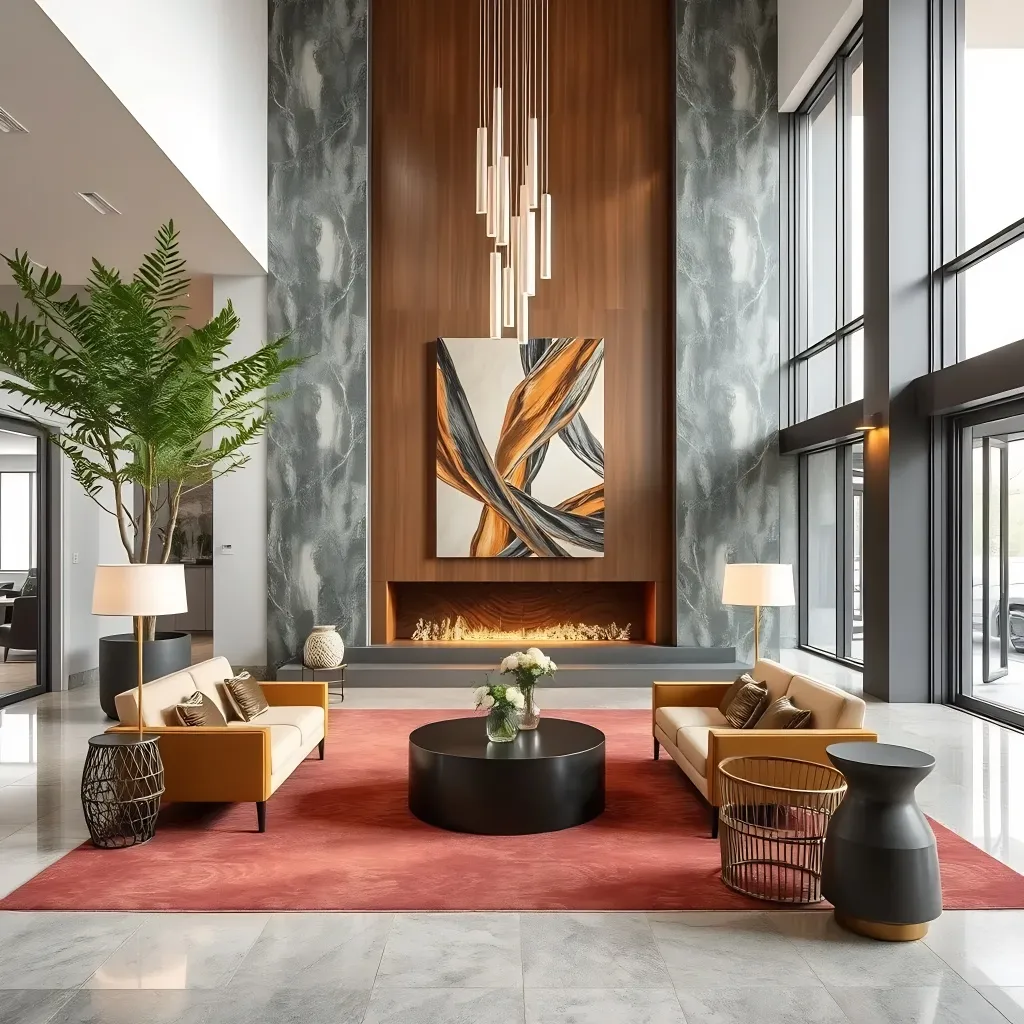
Not everyone walks in alone.
Design your lobby seating for:
- Groups (modular couches or corner arrangements)
- Solo folks (with privacy-friendly zone lighting)
- Quick meets (tall communal tables or bar stool corners)
Mix and match!
Think function with flow. Design with humans in mind. Not robots.
6. Smell Is the Secret Weapon Nobody Talks About
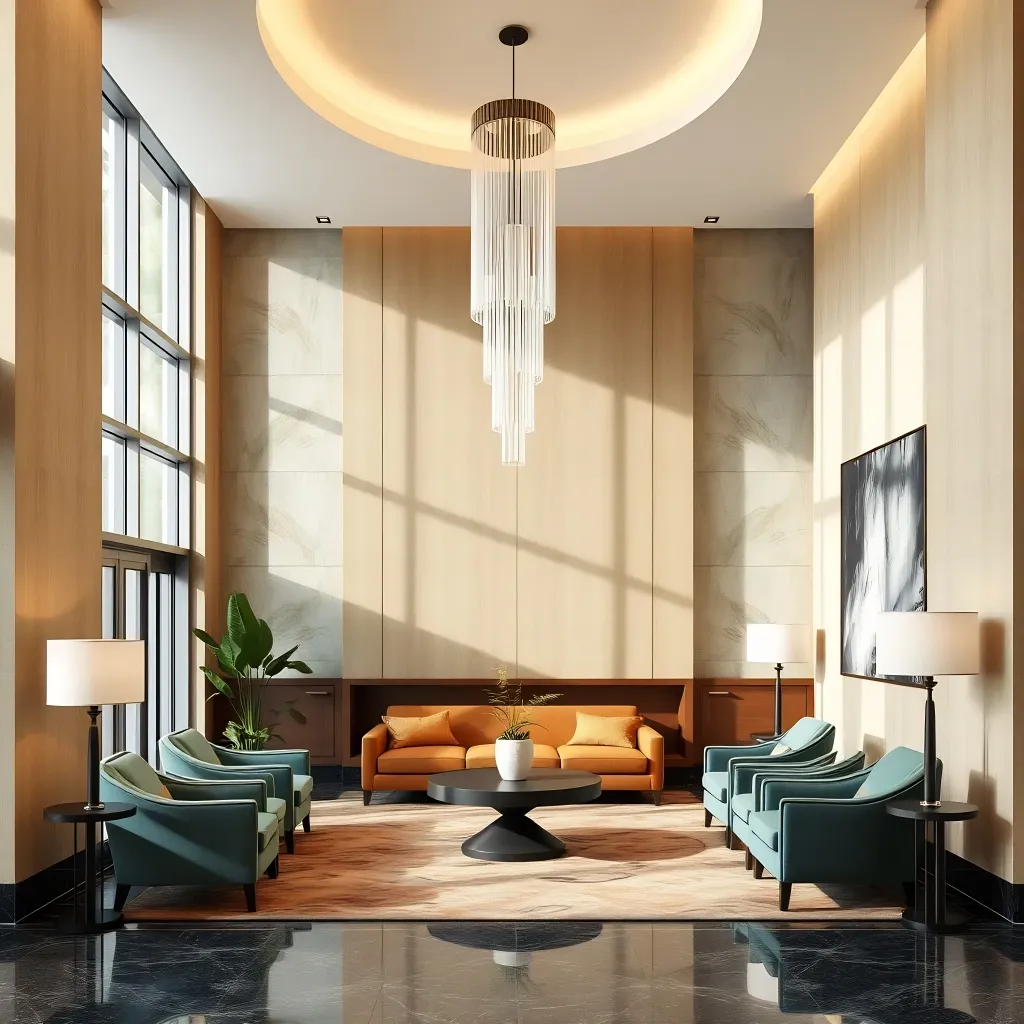
Ever noticed how hotel lobbies smell… amazing?
It’s not by accident.
Scent marketing is real. And powerful.
A great fragrance can:
- Set a tone
- Elevate perception
- Keep people hanging out longer
Try subtle diffusers with notes like:
- Sandalwood (calming)
- Citrus (energizing)
- Fig or cedar (rich and luxe)
7. Create a Multi-Use Lobby (Not Just a Waiting Area)
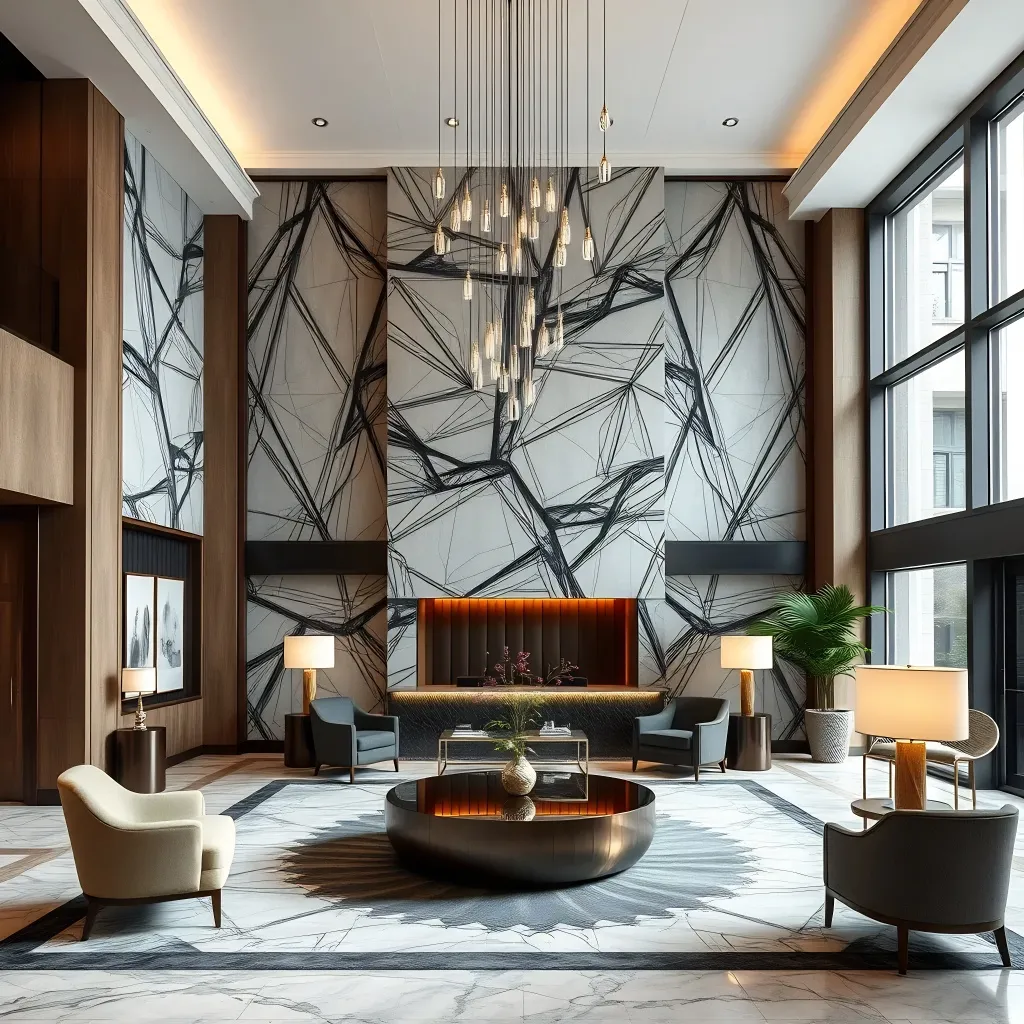
Why waste square footage?
Modern lobbies are multi-functional mini-hubs.
Design yours so people can:
- Grab a coffee
- Sit down on laptops for a Zoom
- Have a chat with a visitor
- Chill and scroll
Blend residential comfort with commercial utility.
Example: In WeWork lobbies, you’ll spot soft booths, coffee tables, bookshelves—like a living room, but for business.
8. Use Texture Like a Pro
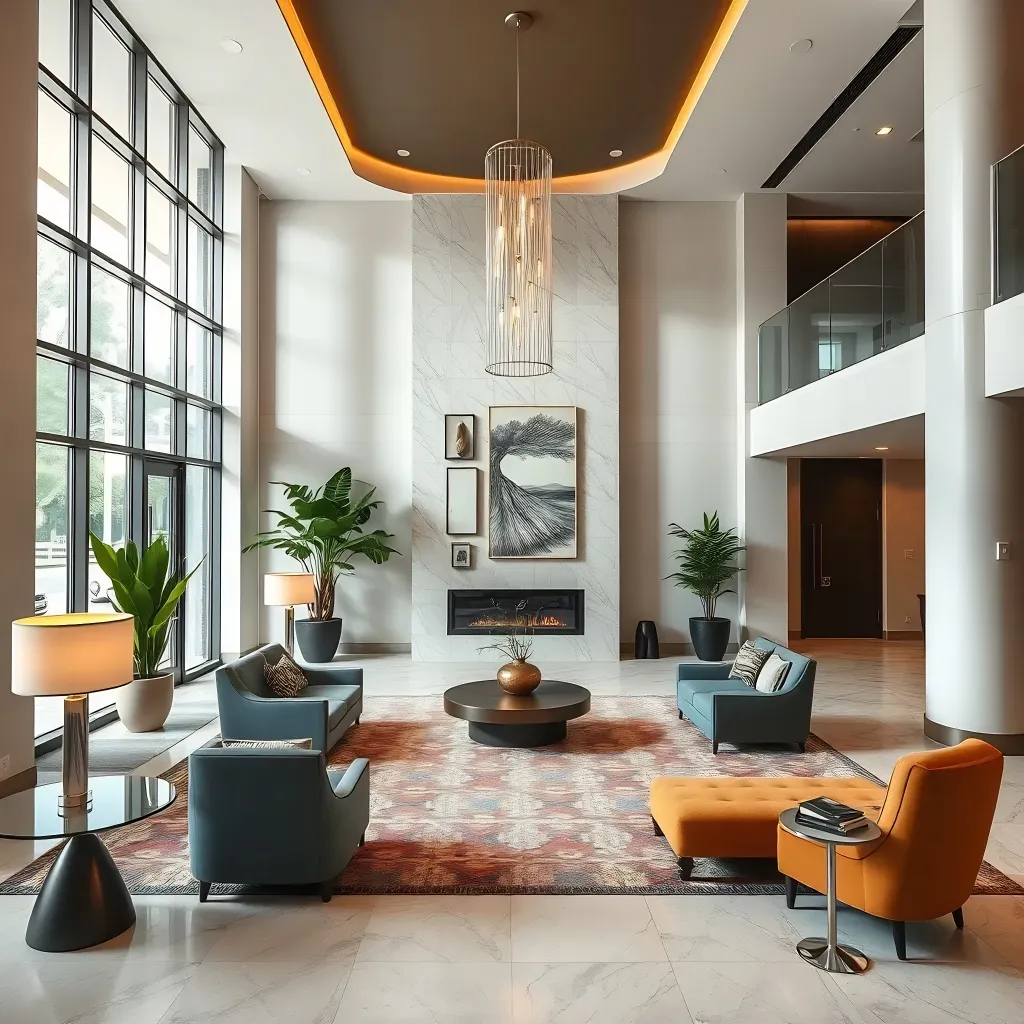
Texture = interest. Texture = warmth. Texture = “Oh wow, they thought this through.”
Incorporate contrast through:
- Exposed brick or reclaimed wood
- Velvet or slubbed linen chairs
- Woven leather benches
- Concrete planters or matte black rails
Good lobby design isn’t just visual. It’s tactile.
9. Wall Features That Aren’t Just “Paint It Beige”
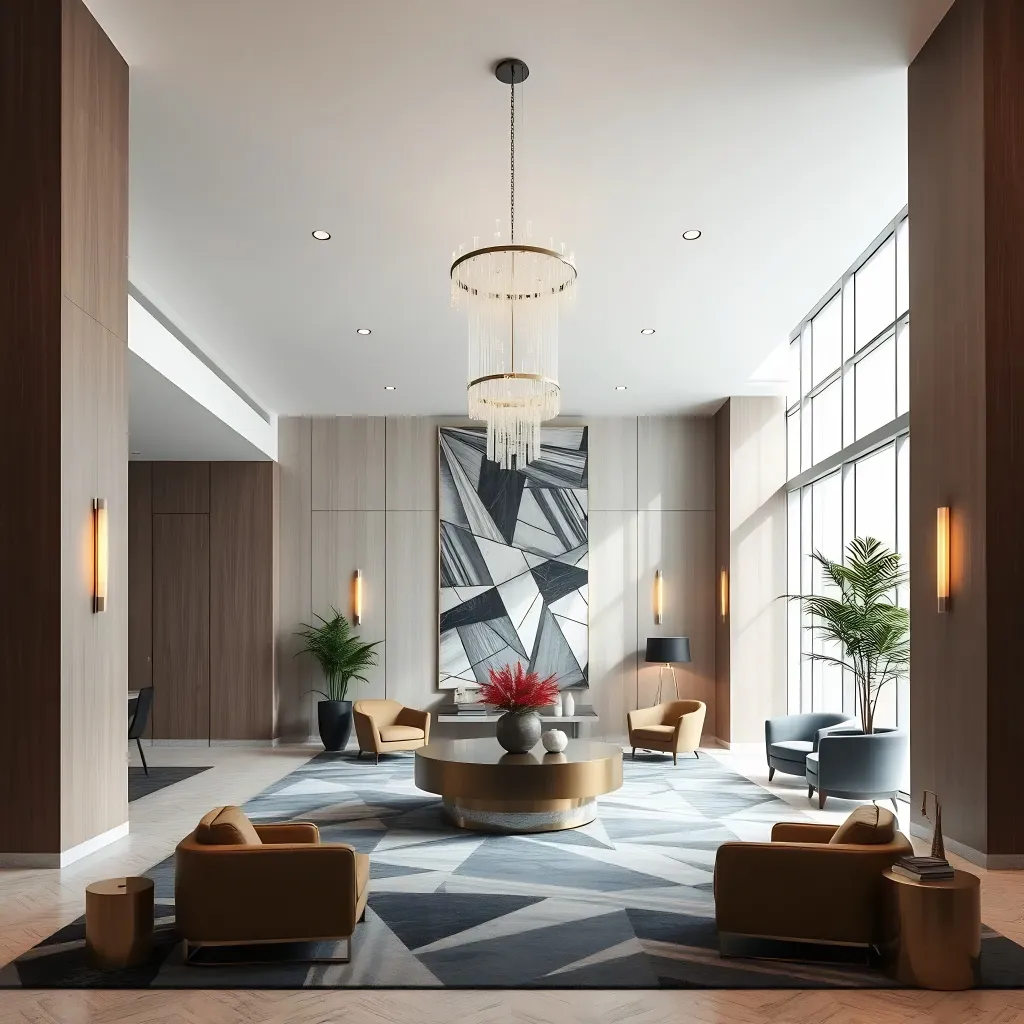
Walls are massive real estate opportunities.
Stop wasting them.
Try:
- Slatted wood accent walls
- Industrial-style concrete finish
- Custom mural or quote typography wall
- Even backlit panels or LED installations
Give people something to look at. And maybe snap a pic with.
10. Sound Design = Mood Design
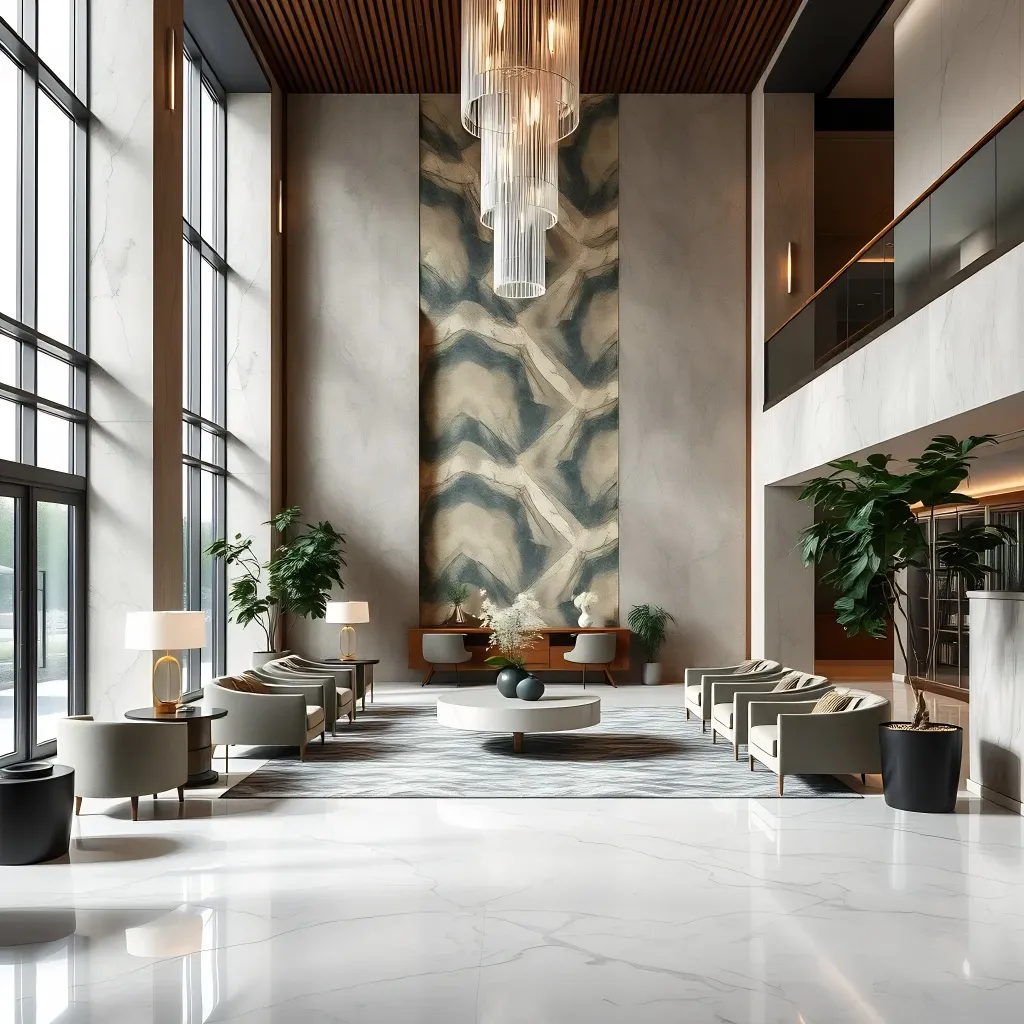
Here’s the thing…
If your lobby echoes, squeaks, or is pin-drop silent—people feel on edge.
Fix it with:
- Acoustic panels on ceilings/walls
- Rugs, curtains, and soft furniture (absorbs sound)
- A curated background playlist (jazz, low-fi, bossa nova—no Top 40 fallback)
The soundscape is part of the lobby vibe. Own it.
11. Minimal Clutter, Maximum Style

You’ve got 25 feet of lobby and filled it with 3 water coolers, 19 brochures, 2 coat racks, and a dusty ficus?
Nope. Simplify.
Use clean lines and negative space to feel upscale and modern.
A minimal lobby doesn’t mean plain.
It means intentional. Functional. Smartly designed.
12. Create Zones, Not Open Wastelands
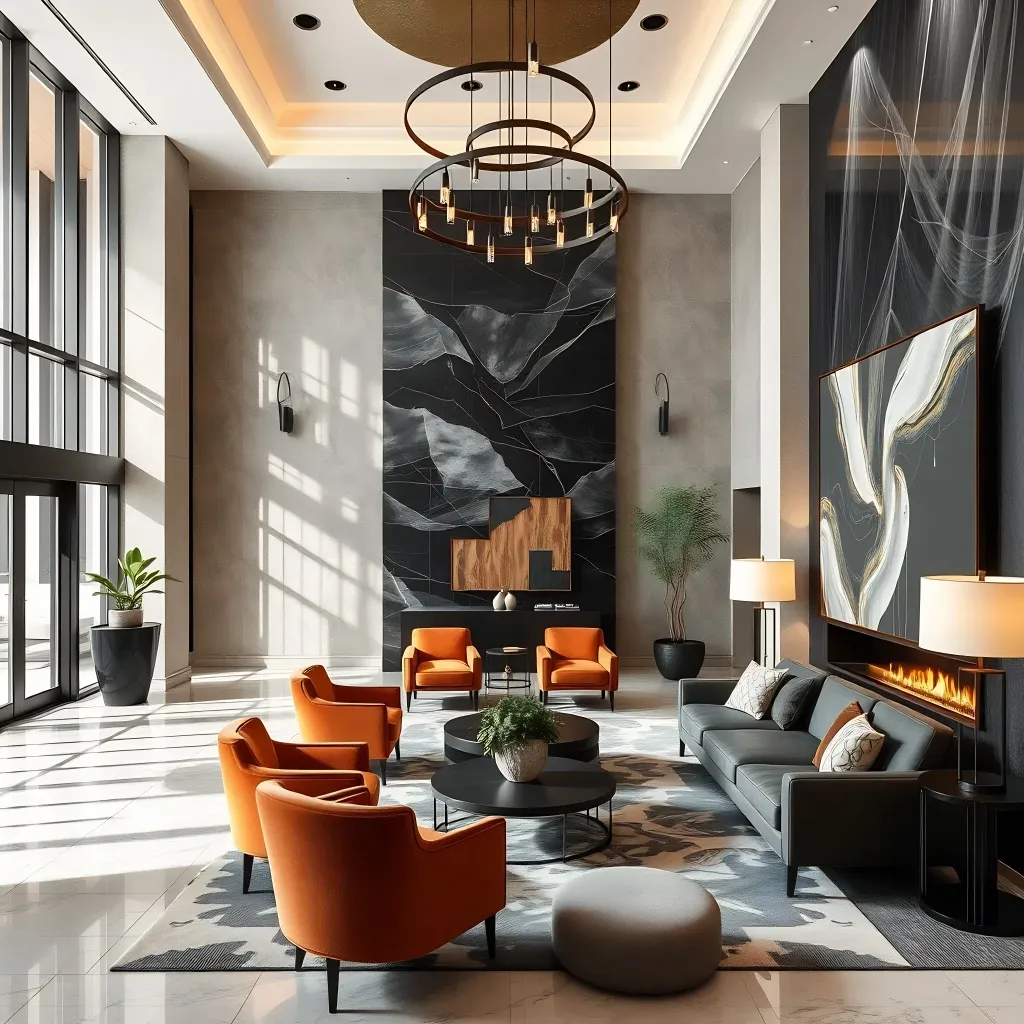
Ever been in a lobby where you don’t know where to sit? Or even if you can sit?
Design zones:
- Welcome/reception zone
- Chill-out/wait zone
- Work zone
- Social mingle zone
Clear zones = clear wayfinding. People move smoother without thinking twice.
13. Incorporate Digital Screens Smartly
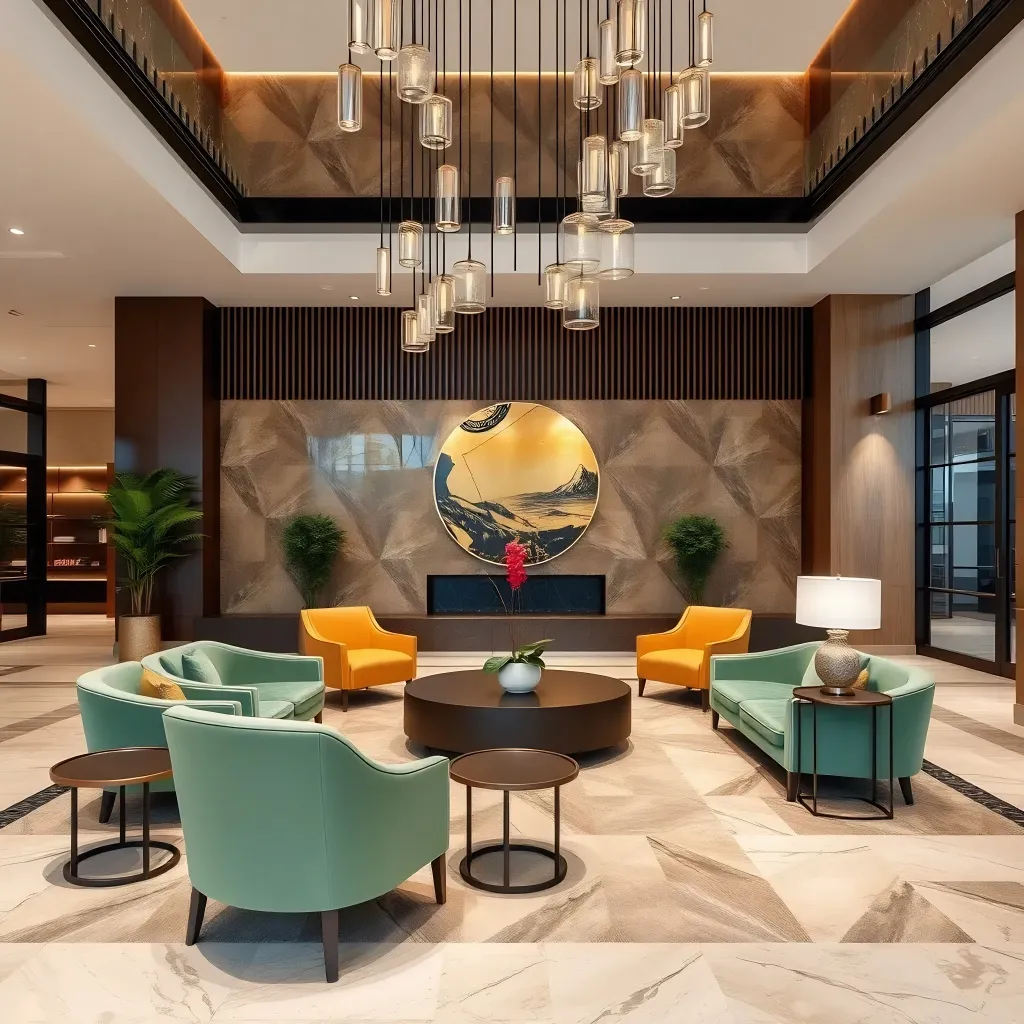
Digital doesn’t mean tacky.
Done right:
- Welcome visitors by name
- Showcase local weather, news, or events
- Display live social wall or company highlights
Make sure it’s sleek. High-res. Always updated.
Otherwise, skip it. Blank or old content looks lazy.
14. Quartz and Natural Stone Flooring FTW
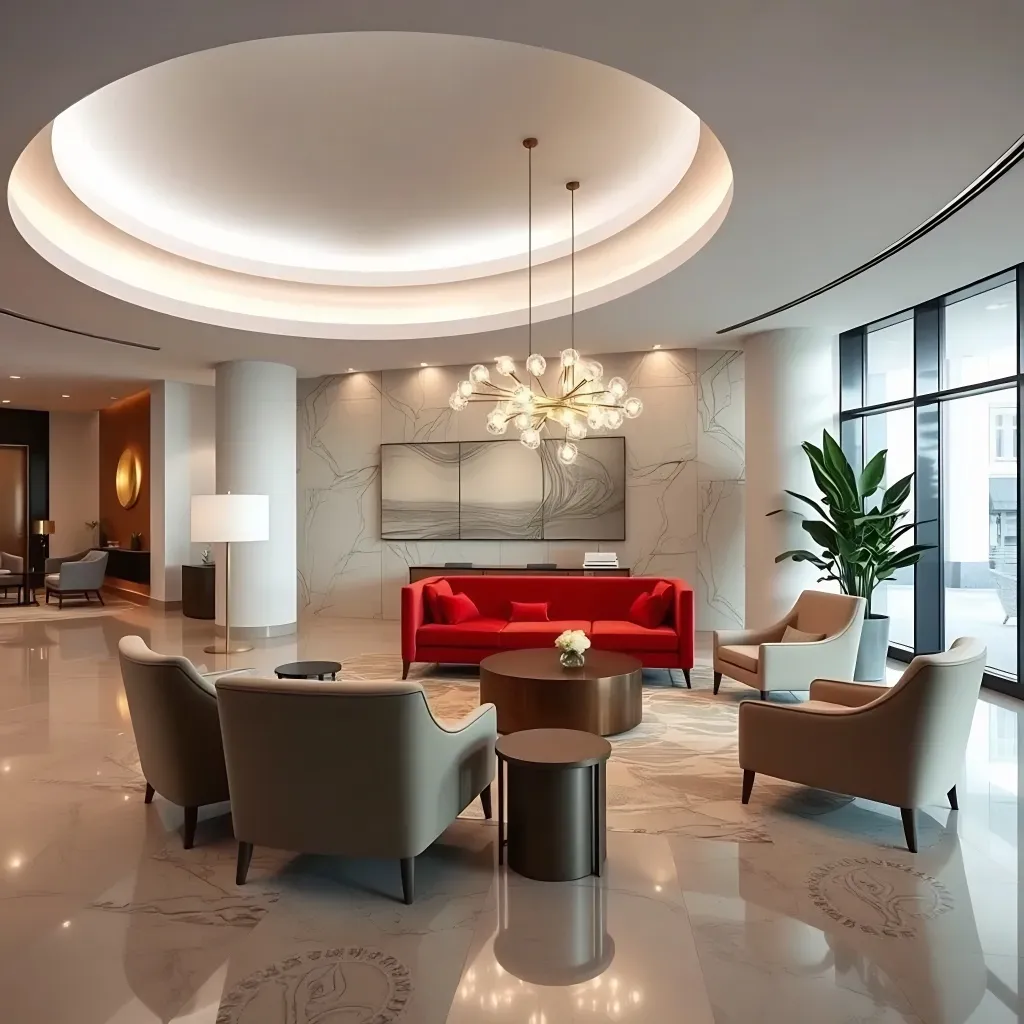
Your floors matter more than you think.
Instead of boring tile, try:
- Honed marble for that luxury pop
- Terrazzo for personality
- Engineered wood if you want warmth with durability
- Polished concrete for industrial vibes
Your carpet? Don’t even get me started.
15. Brand It—But Subtle
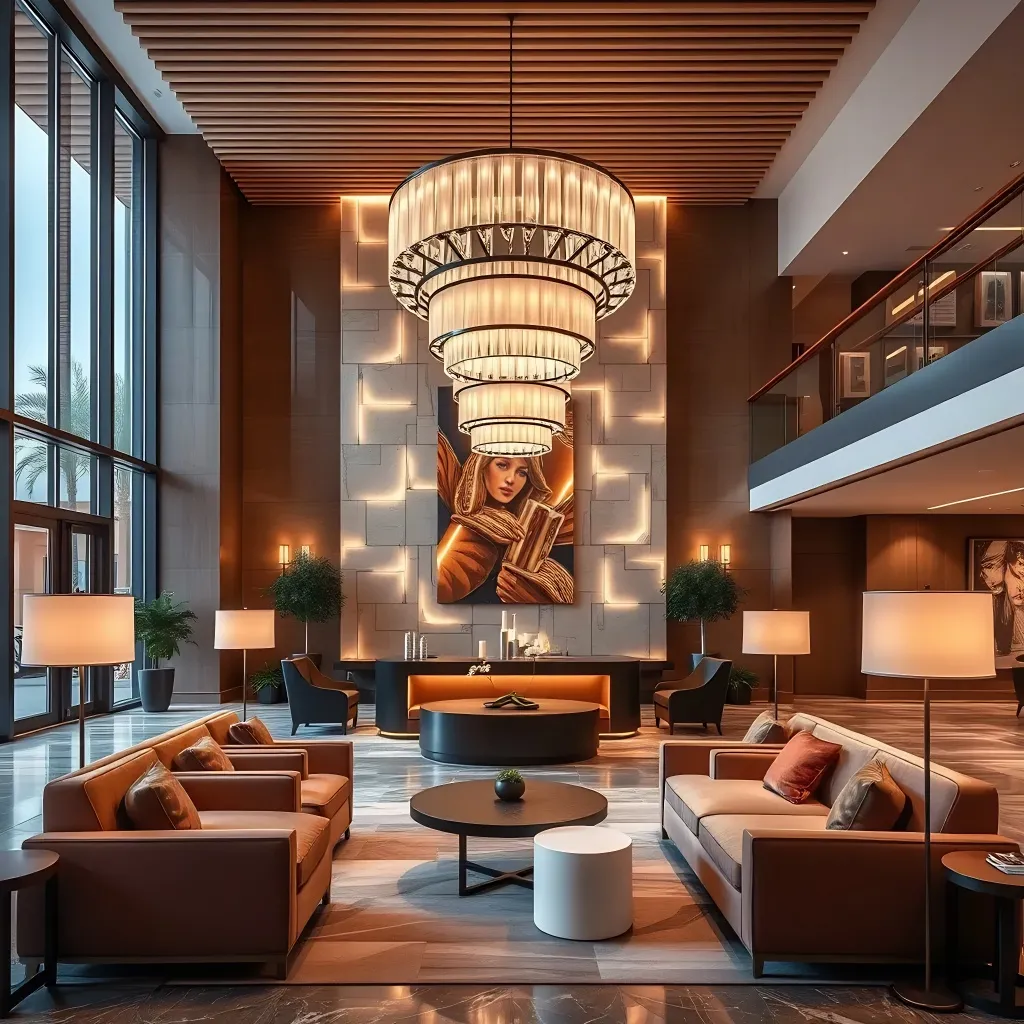
Yes, your logo can be in the lobby.
But make it part of the design—not a giant ego trip.
You can:
- Emboss the brand name into a wood lobby desk
- Use brand colors in accents and textiles
- Include a brand motto or mission on a mural wall
Subtle storytelling > in-your-face signage
16. Add a Beverage Corner (Coffee = Comfort)
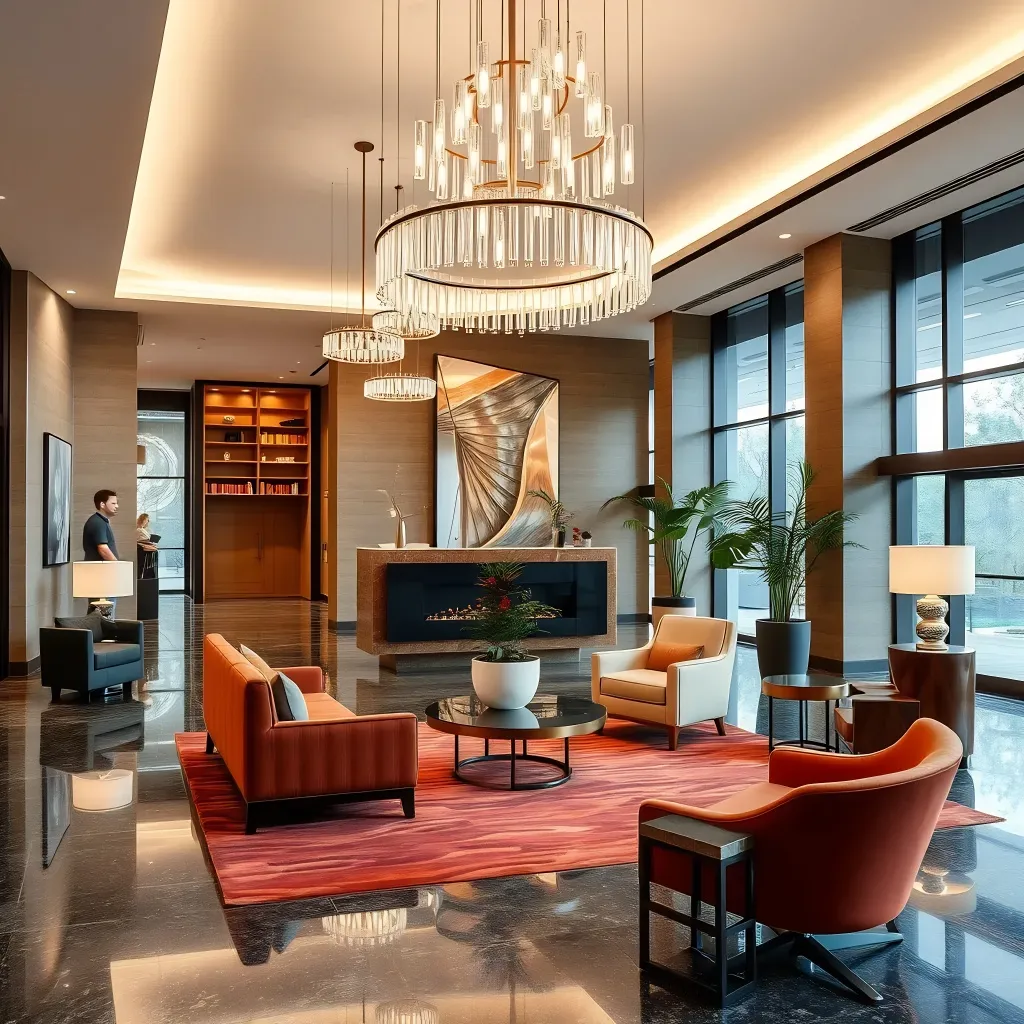
It’s simple:
- A stylish coffee and tea station welcomes guests
- Bonus: filter water or infused pitchers = 5-star hotel feels
- Put it in a quiet corner with a small service table or bar ledge
Give people something to sip on. It slows them down—in a good way.
17. Interactive Design Elements That Engage
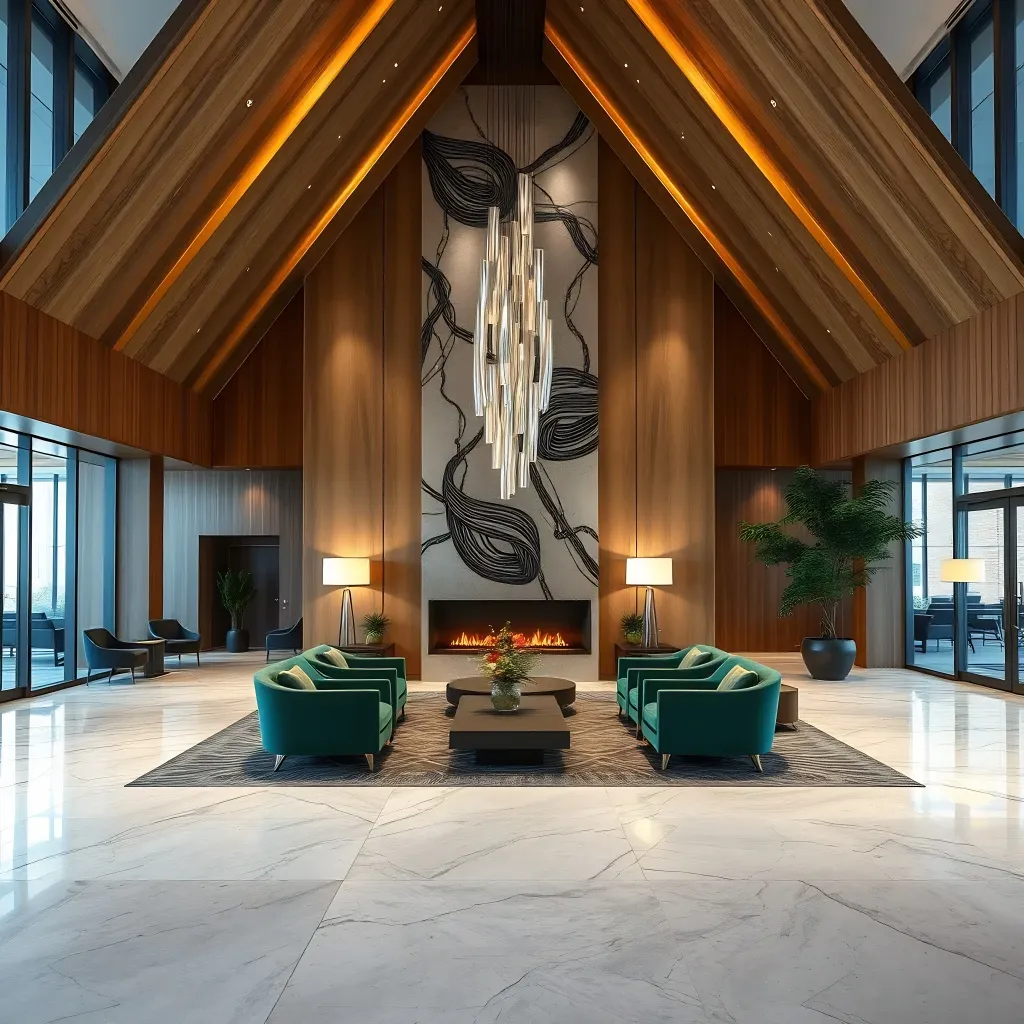
Don’t make your lobby just visual—make it interactive.
What does that mean?
- Touchscreen directories or map displays
- A book exchange or community board
- Simple comment cards tied to a campaign
Even a chalkboard wall with the question “What’s one goal you have this week?”
Get them involved. It’s called presence.
18. Design That Reflects the Community
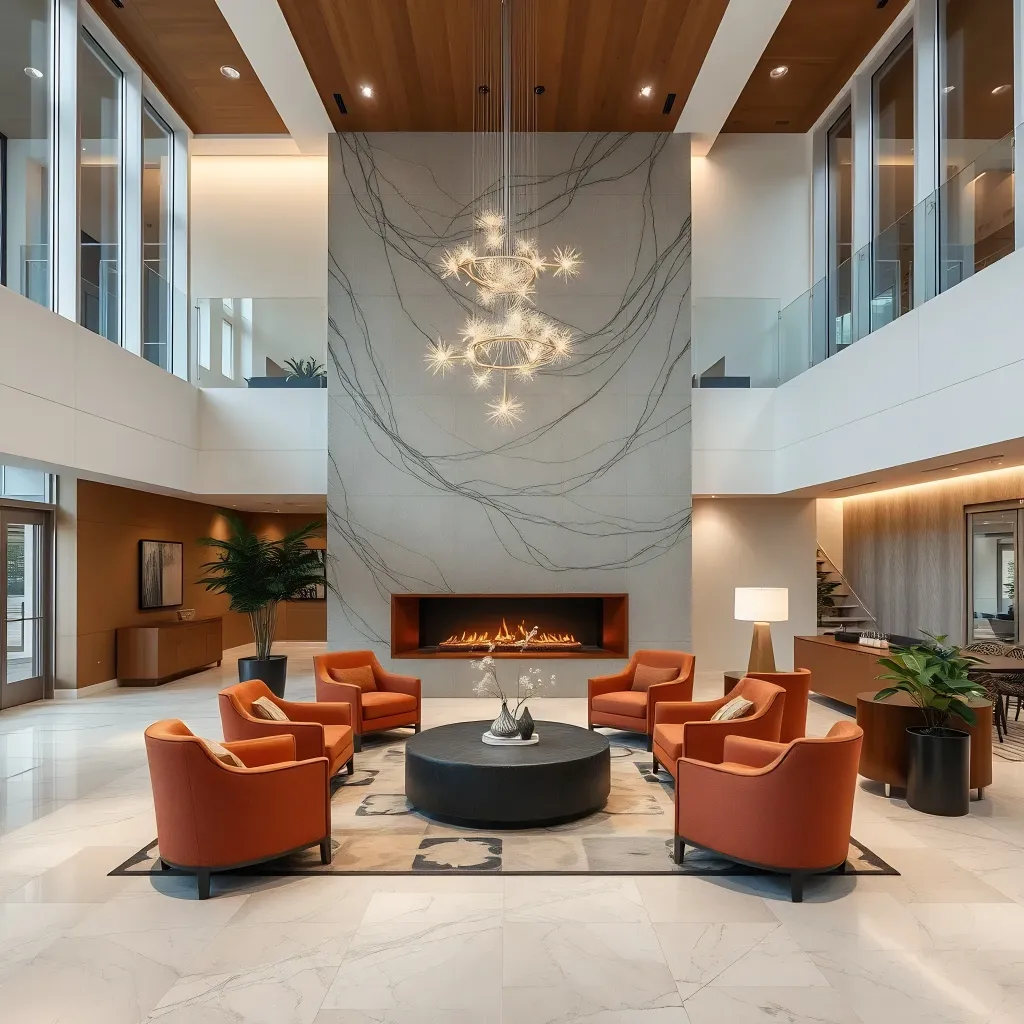
Lobbies shouldn’t feel like no man’s land. Root yours in local culture.
For example:
- A Denver lobby showcasing mountain photos, alpine tones
- A Miami building using pastel terrazzo and lush tropical greens
- A Nashville coworking space using reclaimed wood and vintage music gear
It builds connection in seconds.
19. Smarter Storage So It Doesn’t Look Like a Dumping Ground
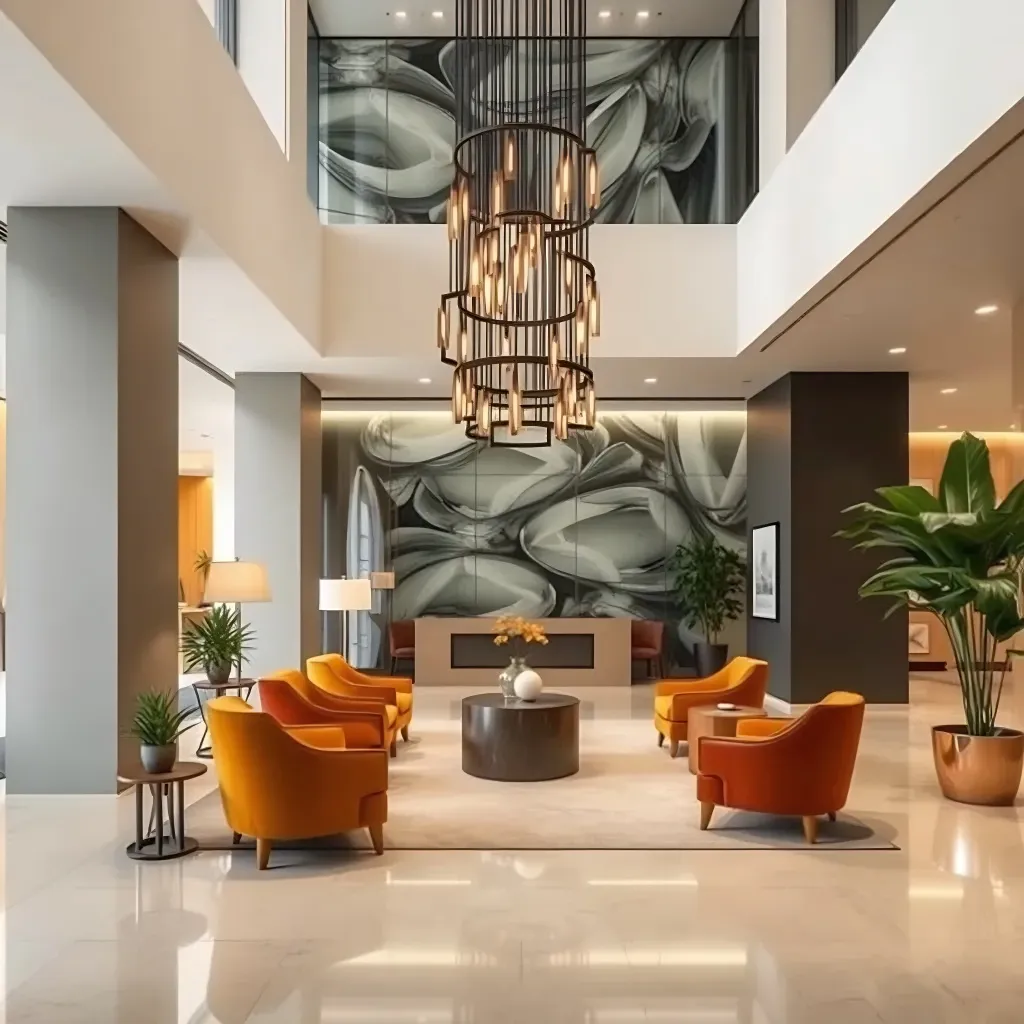
Coat hooks, umbrella bins, delivery parcel corners…
All essential—but often a mess.
Use design-forward approaches:
- Hidden cubbies behind wood slats
- Rolling storage benches
- Wall hook systems that look intentional
Form + function. Always.
20. Design for All Senses, Not Just Sight
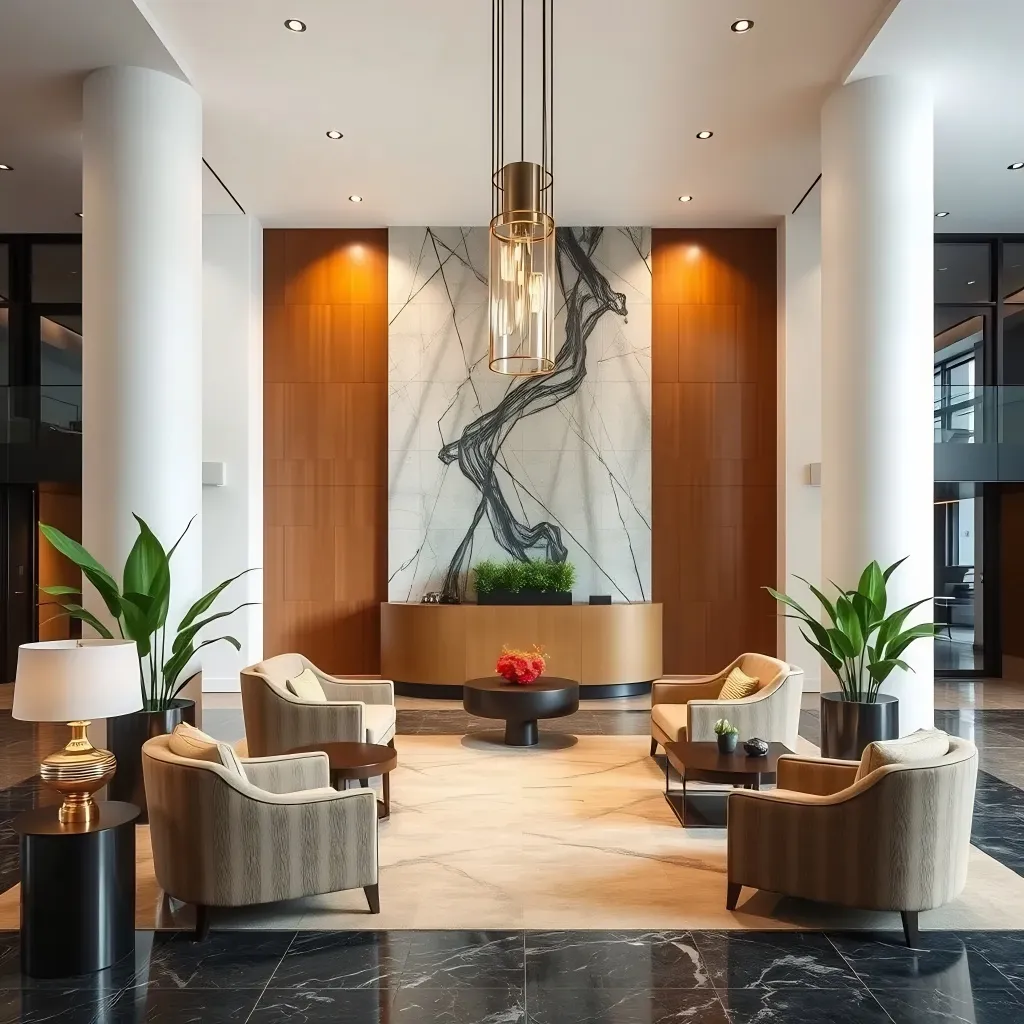
Wrap it all together with full sensory design:
- Sight: Clean lines, focal points, hits of color
- Touch: Varied surfaces and comfort
- Sound: Chill volume and vibe
- Smell: Natural, intentional ambient fragrance
- Taste: Water, tea, coffee optional but powerful
Your lobby should feel like an experience, whether someone’s staying for 30 seconds or 30 minutes.
Final Thoughts
This list of 20 lobby design ideas isn’t about being trendy. It’s about being intentional.
Every square inch of your lobby speaks.
If it’s sloppy, ignored, or generic—people feel it.
If it’s smart, warm, and well-lit—they connect. They trust.
I’ve helped businesses flip their entire perception just by adjusting lobbies.
Small changes = big wins.
Make your lobby work as hard as the rest of your brand.
So if you’re serious about designing a lobby that attracts, communicates, and delivers presence—steal some of these 20 lobby design ideas and get started.